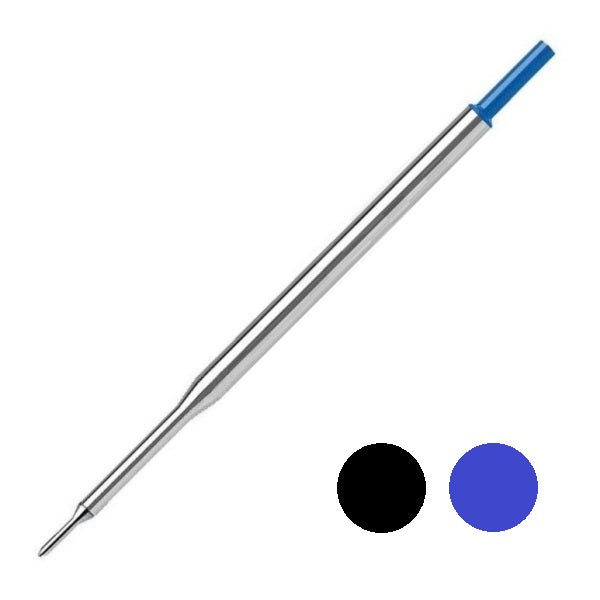Most Common Types of Pens
Here's a guide you use as an educational tool to learn more about the different pen types and inks so you can fine-tune your writing experience.
Fountain pens are among the most iconic, sought-after pens today. They have a calligraphy-style nib that allows ink to glide smoothly across the paper. Once you've made it over the initial learning curve, you'll love the endless customization options — from stunning ink colors to nibs types and unique body styles. Check out our blog, the Ink Blot, for more information.
Ballpoint pens: provide a steady, reliable flow of quick-drying ink. These pens use a metal ball to dispense smudge-resistant, oil-based ink. Because of their ink's viscosity, ballpoint pens require you to use more pressure when writing and are best suited for slick surfaces (like receipts or other thermal papers). Overall, these pens last a long time and offer seamless control.
Rollerball pens: Rollerball pens use free-flowing liquid ink, making writing feel comfortable and effortless. The liquid ink consists of dyes dissolved in water, resulting in a thinner ink with a vibrant color payoff. Rollerball pens come with a cap to prevent the ink from drying out. Although these pens have a longer drying time, they write smoothly and create an enjoyable experience.
BALLPOINT INK

- Ballpoint pen ink uses an oil-based solvent and pigment for color
- Ink formula is smudge resistant, quick-drying, and waterproof
- Requires using more pressure when writing due to the ink's viscosity
- Best suited for slick surfaces
- Sometimes uses a hybrid or low-viscosity ink enhanced with lubricants making the ball at the tip rotate smoothly
ROLLERBALL INK (WATER-BASED)

- Smooth flowing and smudge-resistant ink
- Rollerball ink comes in various colors, but Black, Blue, and Red are the most common
- Water-based inks dry much quicker and will not smudge
- Best suited for slick surfaces
- Rich, intense color pays off due to paper saturation
GEL INK (AVAILABLE FOR ROLLERBALL AND BALLPOINT PENS IN MOST CASES)

- Gel pen ink contains colorful pigment suspended in a thick, water-based gel
- Ink is thick, opaque, and available in almost every color
- The high viscosity of gel formula offers high pigmentation compared to standard gel ink
- t can accommodate various pigments such as copper and iron oxides
- Smooth flowing ink that requires little pressure
- It takes longer to dry and can easily smudge.
REFILL & CARTRIDGES
Most pen refills last many years, depending on if you correctly store them. Keep refills and cartridges in a dry, cool place away from humidity and heat. Rollerball pen refills (water-based) will usually last one year and are the quickest to dry out because they are water-based, and the water will eventually evaporate.
CLEANING A FOUNTAIN PEN:
You should plan on doing a basic cleaning of your Fountain pen around every 4 to 8 weeks, providing they’re still writing well. Fountain pens also need to be cleaned when changing ink colors or manufacturers to prevent colors from mixing together. Follow our steps below to clean your fountain pen properly and avoid unnecessary damage.
Step 1: Dismantle the Pen
Remove the pen cap and unscrew the nib section from the barrel. Next, remove the cartridge or converter from the nib section of your fountain pen (if this applies).
Step 2: Rinse off the Nib Section
Run the nib section under cool, running water for a few seconds to wash off any removable ink.
Step 3: Soak the Section
Place the nib section in a cup of water and leave it to soak. Change the water once it becomes saturated with ink, repeating this step until the water remains clean for at least an hour. Pro tip—higher saturated and water-resistant ink often takes longer to clean out of a pen.
Step 4: Dry the Section
Remove the section from the water. Place it in a cup with the nib down, wrapping it in a soft towel to help encourage the water to dry out. Wait 24 hours until the nib section is completely dry.
Step 5: Reassemble the Pen
After the nib section is dry, reinstall the cartridge or converter (if the pen uses one), then screw the nib section back into the barrel.





